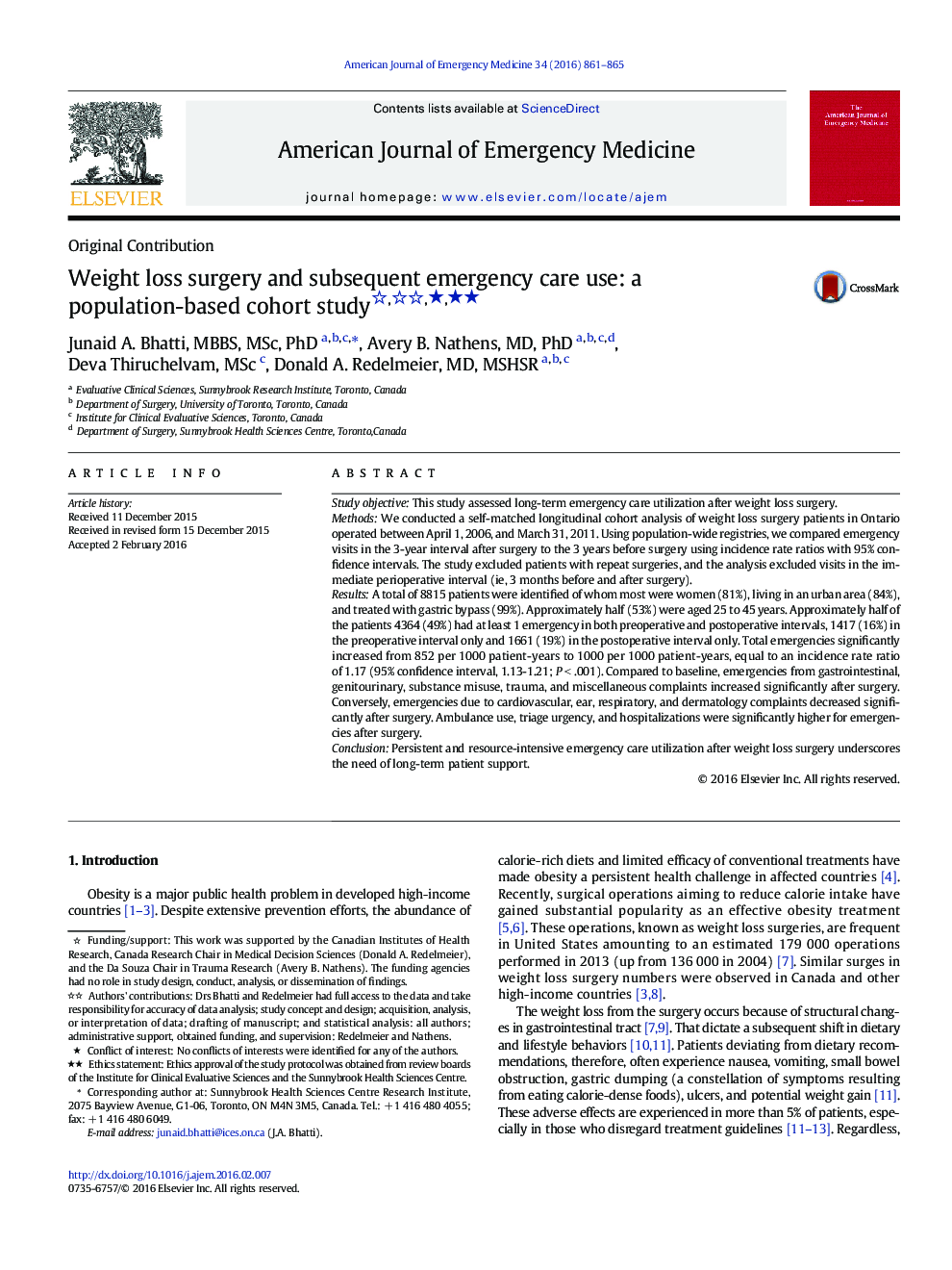| Article ID | Journal | Published Year | Pages | File Type |
|---|---|---|---|---|
| 3223302 | The American Journal of Emergency Medicine | 2016 | 5 Pages |
Study objectiveThis study assessed long-term emergency care utilization after weight loss surgery.MethodsWe conducted a self-matched longitudinal cohort analysis of weight loss surgery patients in Ontario operated between April 1, 2006, and March 31, 2011. Using population-wide registries, we compared emergency visits in the 3-year interval after surgery to the 3 years before surgery using incidence rate ratios with 95% confidence intervals. The study excluded patients with repeat surgeries, and the analysis excluded visits in the immediate perioperative interval (ie, 3 months before and after surgery).ResultsA total of 8815 patients were identified of whom most were women (81%), living in an urban area (84%), and treated with gastric bypass (99%). Approximately half (53%) were aged 25 to 45 years. Approximately half of the patients 4364 (49%) had at least 1 emergency in both preoperative and postoperative intervals, 1417 (16%) in the preoperative interval only and 1661 (19%) in the postoperative interval only. Total emergencies significantly increased from 852 per 1000 patient-years to 1000 per 1000 patient-years, equal to an incidence rate ratio of 1.17 (95% confidence interval, 1.13-1.21; P < .001). Compared to baseline, emergencies from gastrointestinal, genitourinary, substance misuse, trauma, and miscellaneous complaints increased significantly after surgery. Conversely, emergencies due to cardiovascular, ear, respiratory, and dermatology complaints decreased significantly after surgery. Ambulance use, triage urgency, and hospitalizations were significantly higher for emergencies after surgery.ConclusionPersistent and resource-intensive emergency care utilization after weight loss surgery underscores the need of long-term patient support.
